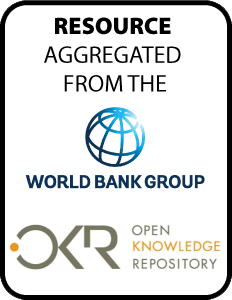of Papua and West Papua : Infrastructure for sustainable development
Resource information
The remote and sparsely populated
provinces of Papua and West Papua face a time of great
change. Monetary transfers from Jakarta have grown
extraordinarily in recent years, by more than 600 percent in
real terms and 1300 percent in nominal terms since 2000,
greatly increasing demand for goods and services. The high
price of imports in the interior is producing pressure to
improve roads in order to lower transport costs. Pressure is
mounting to open up the interior of the region to commercial
interests that would like to extract resources: copper,
gold, coal, petroleum, natural gas, and, above all, timber.
Investment in infrastructure, especially in road transport,
is seen as the means to make dreams of development a
reality. Building infrastructure in Papua and West Papua
also is challenging because of physical (i.e. topographical
and geological) conditions. Much of the region has either
poorly drained peat soils or steep slopes with thin soils
subject to landslides and erosion. Most of Papua and West
Papua also receive heavy seasonal rainfall. The cost of
building a good, well-planned road into the highlands is
Indonesian Rupiah (IDR) 6 to 10 billion per kilometer, far
more than has been budgeted in the past. Combined with the
low population density (a region three times the size of
Java has a population smaller than that of Lombok), this
means that it takes bigger networks of roads and power to
serve the population. Moreover, such infrastructure has been
inadequately maintained. As a result, especially outside
urban areas, there is too little to show for past
investments in roads, water supply systems, or power
generating capacity. The aim of this report is: (i) to lay
out the challenges that faces infrastructure planners and
implementers in the central, provincial, and Kabupaten and
Kota governments in a clear manner; and (ii) provide those
planners and implementers with recommendations, based on the
best information available, on how to mitigate the effects
of these challenges.


